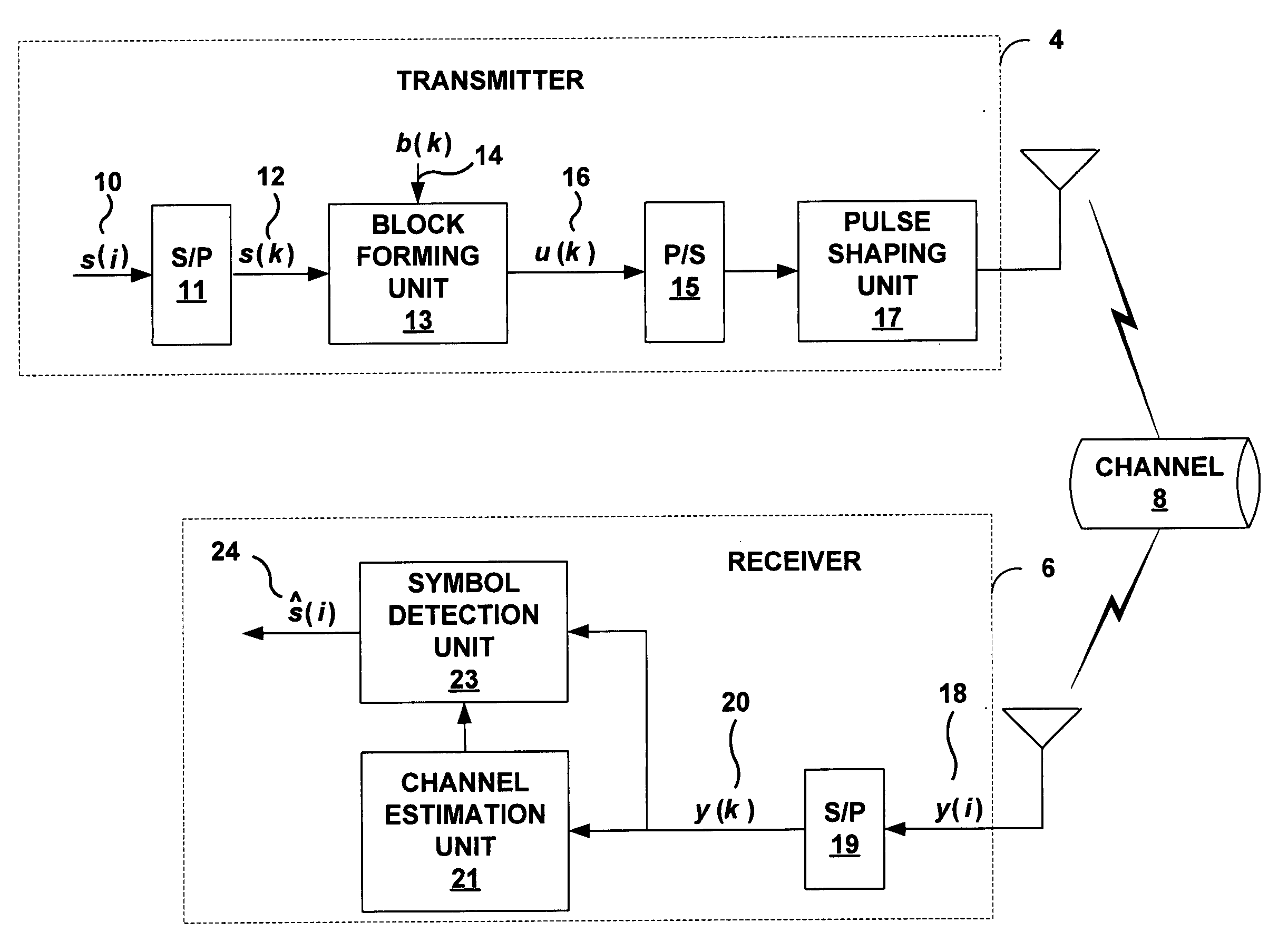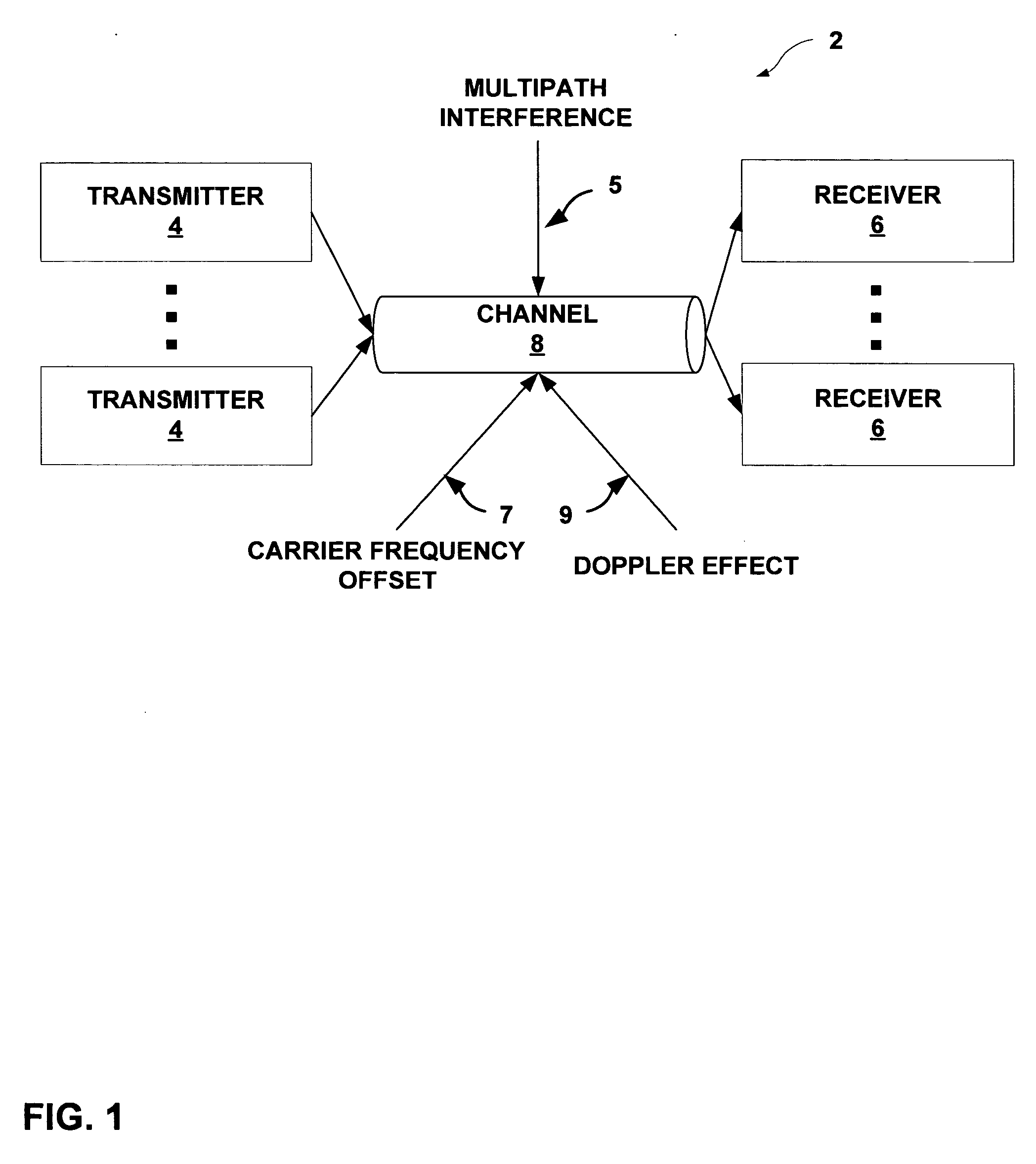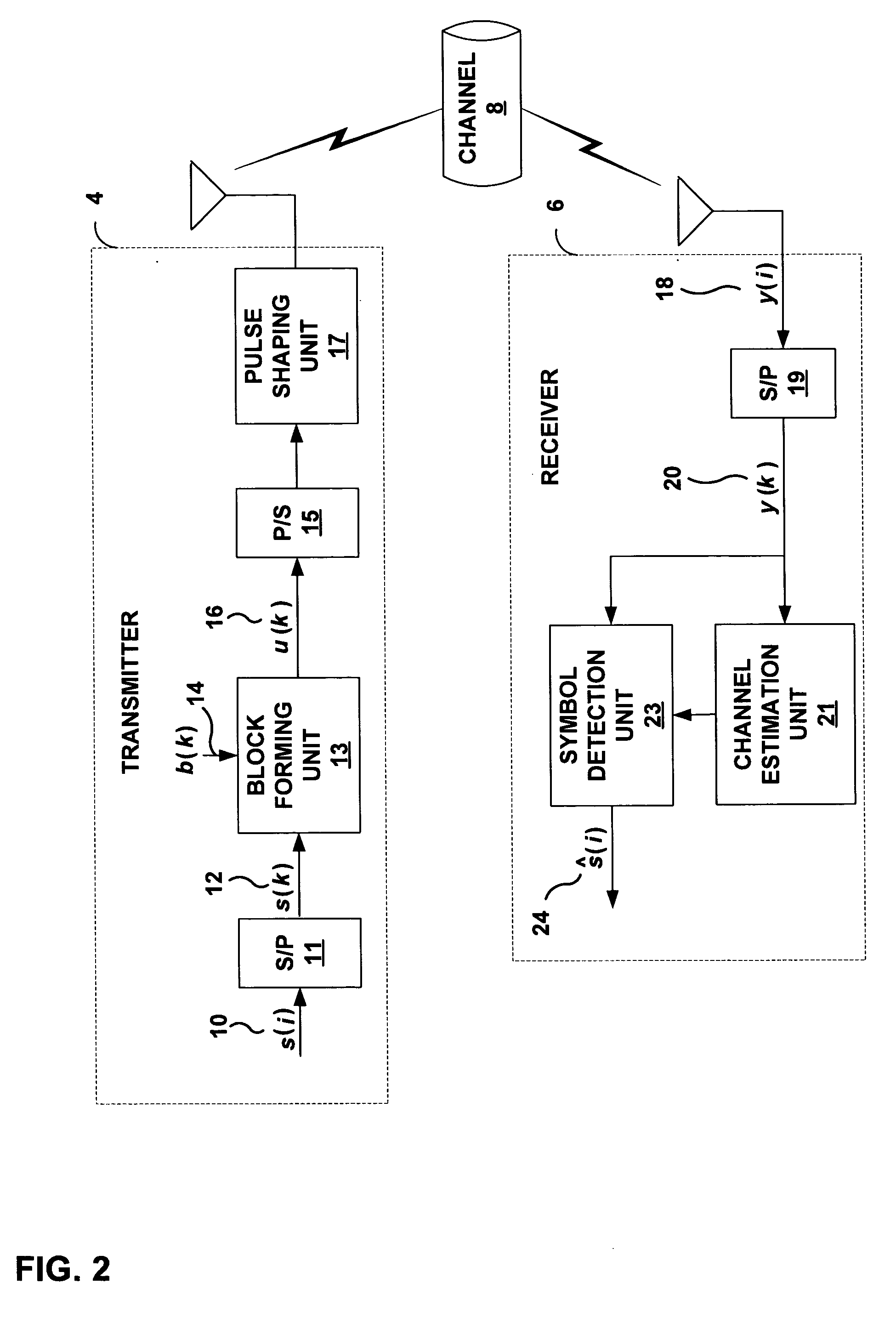Channel estimation for block transmissions over time-and frequency-selective wireless fading channels
a channel estimation and block transmission technology, applied in the field of wireless communication systems, can solve the problems of reducing requiring longer sequences of symbols, and reducing the efficiency of the blind channel estimation scheme, so as to maximize the average capacity of the communication channel and minimize the minimum mean-square error (mmse)
- Summary
- Abstract
- Description
- Claims
- Application Information
AI Technical Summary
Benefits of technology
Problems solved by technology
Method used
Image
Examples
Embodiment Construction
Throughout the Detailed Description bold upper letters denote matrices, bold lower letters stand for column vectors, (●)T and (●)H denote transpose and Hermitian transpose, respectively; (●)• denotes conjugate and (●)† denotes the matrix pseudoinverse. E[●] stands for expectation with respect to all the random variables with the brackets, ┌●┐ and └●┘ represent the integer floor and integer ceiling, respectively; ★ and † represent convolution and Kroenecker's product, respectively; [A]k,m denotes the (k, m)th entry of a matrix A, tr(A) represents the trace of matrix A, and [x]m denotes the mth entry of the column vector x, and diag[x] stands for a diagonal matrix with x on its main diagonal
FIG. 1 is a block diagram illustrating a multi-user wireless communication system 2 in which multiple transmitters communicate with multiple receivers through time- and frequency-selective wireless communication channel 8. In general, the invention provides techniques for forming estimates of cha...
PUM
 Login to View More
Login to View More Abstract
Description
Claims
Application Information
 Login to View More
Login to View More - R&D
- Intellectual Property
- Life Sciences
- Materials
- Tech Scout
- Unparalleled Data Quality
- Higher Quality Content
- 60% Fewer Hallucinations
Browse by: Latest US Patents, China's latest patents, Technical Efficacy Thesaurus, Application Domain, Technology Topic, Popular Technical Reports.
© 2025 PatSnap. All rights reserved.Legal|Privacy policy|Modern Slavery Act Transparency Statement|Sitemap|About US| Contact US: help@patsnap.com



